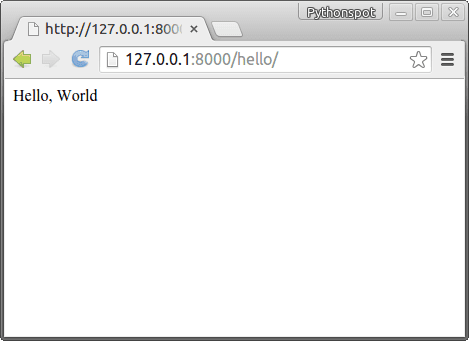django getting started
Python hosting: Host, run, and code Python in the cloud!
Django is a high-level Python Web framework that takes care of much of the hassle of Web development, so you can focus on writing your app without needing to reinvent the wheel.
In this tutorial you will learn how to setup a basic Django web app.
Related course
Intro to Django Python Web Apps
Django tutorial
Install Django using:
pip install Django==1.7.1 |
Once installed, create the directory /django-hello/ for your app. In this directory create the file hello.py with this contents:
#!/usr/bin/env python |
Execute the script using:
python hello.py runserver |
A HTTP Django server will start and if you open http://127.0.0.1:8000/hello/
 Django Web Framework
Django Web FrameworkDjango code explanation
The top lines import the Django library:
from django.conf import settings |
If you open the link /hello/, the webserver will call the index() function. We map the url to the function using:
urlpatterns = patterns('', |
In Django we have url friendly urls. This means you do not have a url that ends in /id=1359835, but instead we have the directory as name. Finally, we set some default settings using settings.configure.
Related course
Intro to Django Python Web Apps

Leave a Reply: